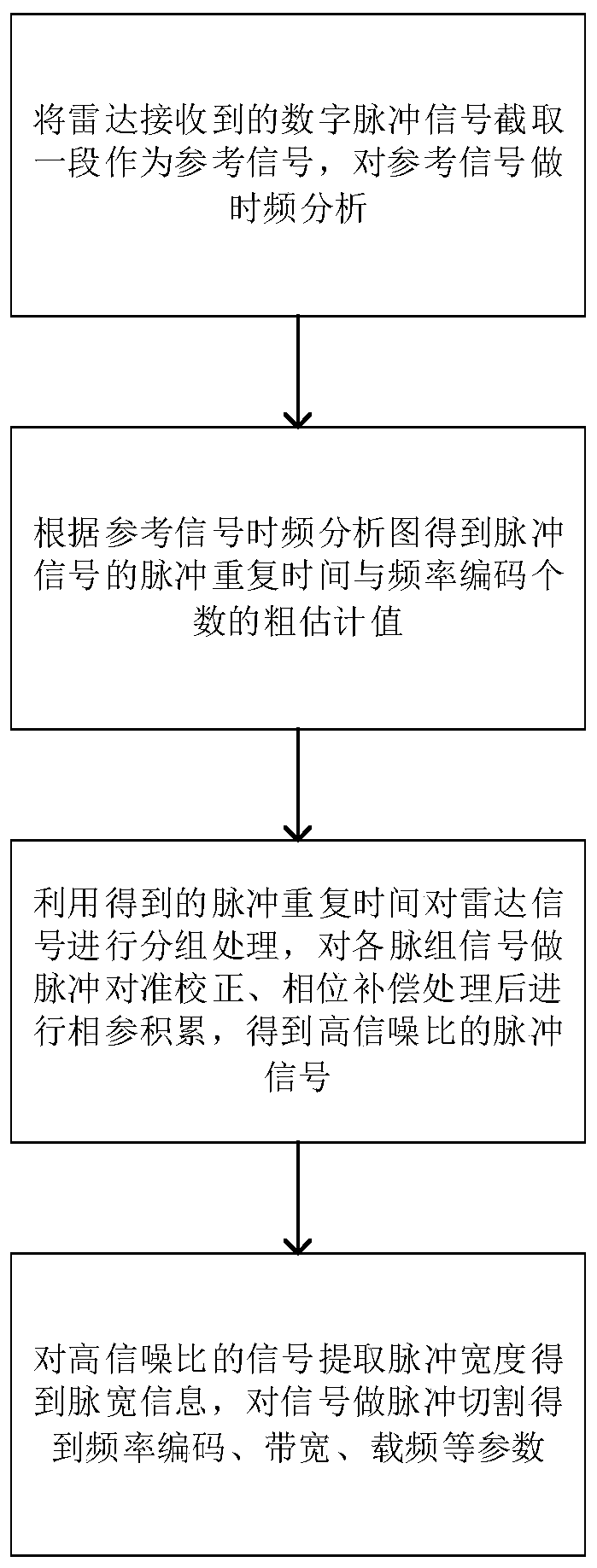Low SNR signal parameter extraction method based on pulse cutting
A pulse signal and low signal-to-noise ratio technology, applied in the radar field, can solve problems affecting the accuracy of parameter extraction, pulse signal submersion, and unsuitable signal grouping calculations, etc., to achieve high precision and improve the effect of signal-to-noise ratio
- Summary
- Abstract
- Description
- Claims
- Application Information
AI Technical Summary
Problems solved by technology
Method used
Image
Examples
Embodiment Construction
[0029] The technical solutions in the embodiments of the present invention will be clearly and completely described below in conjunction with the accompanying drawings. Apparently, the described embodiments are only some, not all, embodiments of the present invention. Based on the embodiments of the present invention, all other embodiments obtained by persons of ordinary skill in the art without making creative efforts belong to the protection scope of the present invention.
[0030] refer to figure 1 , a method for extracting parameters of a discrete frequency coded pulse signal based on pulse cutting in the case of a low signal-to-noise ratio provided by an embodiment of the present invention, comprising the following steps:
[0031] Step 1: Calculate the time-frequency diagram of the reference signal, and extract the pulse repetition time and the number of frequency codes.
[0032] The radar receives the radar pulse signal transmitted by the other party through the radar r...
PUM
 Login to View More
Login to View More Abstract
Description
Claims
Application Information
 Login to View More
Login to View More - R&D
- Intellectual Property
- Life Sciences
- Materials
- Tech Scout
- Unparalleled Data Quality
- Higher Quality Content
- 60% Fewer Hallucinations
Browse by: Latest US Patents, China's latest patents, Technical Efficacy Thesaurus, Application Domain, Technology Topic, Popular Technical Reports.
© 2025 PatSnap. All rights reserved.Legal|Privacy policy|Modern Slavery Act Transparency Statement|Sitemap|About US| Contact US: help@patsnap.com



